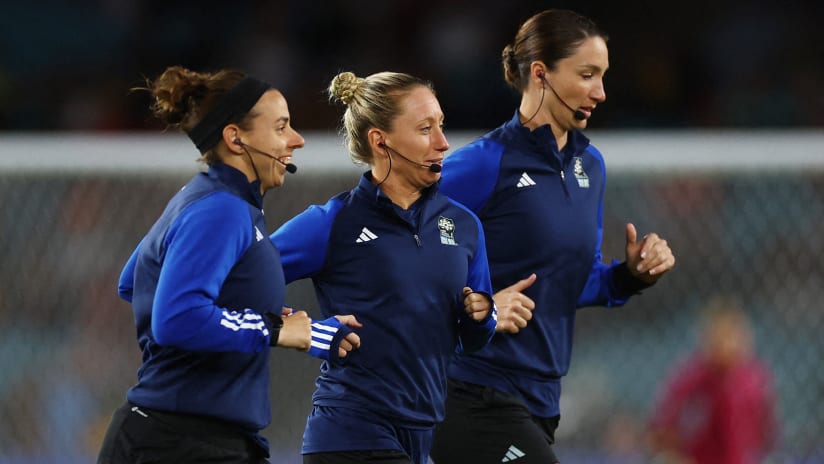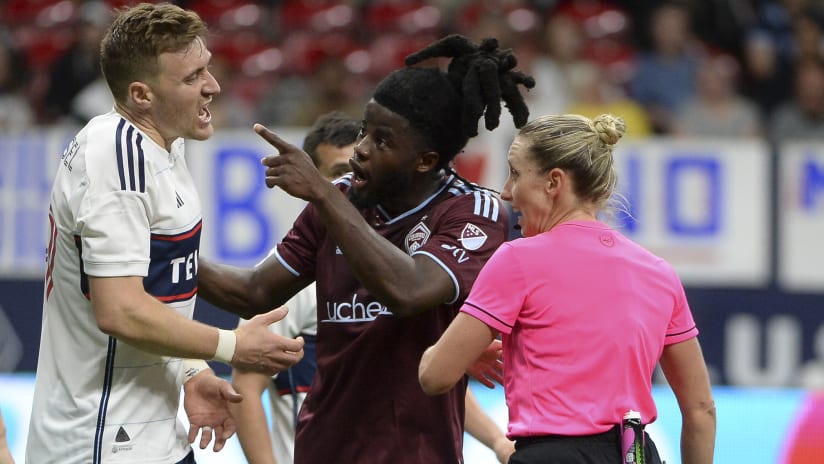HARRISON, NJ – Video replay in Major League Soccer matches is on the horizon, as the International Football Association Board (IFAB), in cooperation with MLS, conducted a workshop at Red Bull Arena this week where video assistant referees were used for the first time in a live experiment.
As part of a three-day workshop, IFAB Technical Director David Elleray explained in a media briefing Wednesday the situations where the two-year video assistant referee experiment would be utilized.
Those situations are: Goals, penalty decisions, straight red cards and mistaken identity.
However, noting the subjectivity of officiating, Elleray said not every one of those situations is up for review.
“These are just for clear errors in certain match-changing situations,” Elleray said. “It’s not to make sure every decision in every football match is correct.”
Elleray used the controversial Raul Ruidiaz handball goal for Peru that eliminated Brazil from Copa America Centenario as an example of a “clear error” that would be up for review.
However, the experiment is only being used by national leagues in the United States, Australia, Brazil, Germany, Portugal and the Netherlands and doesn’t involve international competitions yet.
As displayed in a scrimmage at Red Bull Arena on Wednesday, the video assistant referee will be in a booth inside the stadium and there will be an additional monitor by the fourth official that the referee can consult. The VAR will be on the same communication headset with the referee as the fourth official and the assistant referees.
While the VAR can make recommendations, the referee makes the final decision and is the one who dictates whether the replay process is utilized. Decisions will only be changed if they are clearly wrong.
The video assistant referees will be match officials, either current or former referees from the country’s top level.
There will be no time limit to the review process and Elleray said players and technical staff should not surround an official in an attempt to influence their decision.
Elleray said it is important the referee is within sight and not head down a tunnel and review a play inside a room. Ideally, he said, the referee would make their decision on the side of the field.
He also said the process works best during a stoppage of play, but if play does continue, any discipline that occurs after the reviewable moment and the stoppage would be upheld. For example, if an altercation happens after, those red cards would still be intact regardless of the review decision.
Success of this experiment, Elleray said, is based on the following factors:
- The accuracy of reviewed decisions
- The number of reviewed decisions and duration of interruption of play for the review
- The impact of the review process on the flow and emotion of the game.
“It won’t end all wrong decisions,” Elleray said. “To achieve that we destroy football and we couldn’t achieve it because so many decisions are subjective. It’s to correct clear errors in match-changing situations.”












